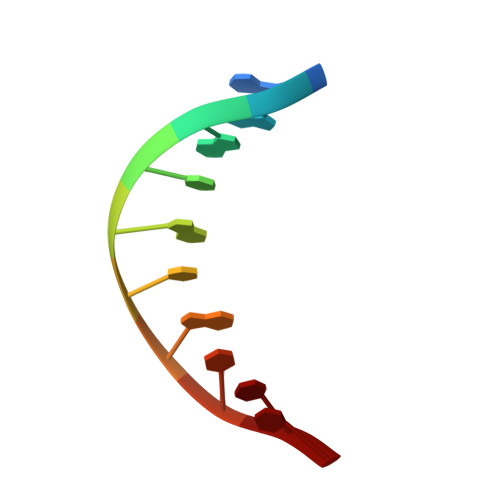Molecular basis for sequence-dependent induced DNA bending.
Rettig, M., Germann, M.W., Wang, S., Wilson, W.D.(2013) Chembiochem 14: 323-331
- PubMed: 23355266
- DOI: https://doi.org/10.1002/cbic.201200706
- Primary Citation of Related Structures:
2LWG, 2LWH - PubMed Abstract:
With a growing understanding of the microstructural variations of DNA, it has become apparent that subtle conformational features are essential for specific DNA molecular recognition and function. DNA containing an A-tract has a narrow minor groove and a globally bent conformation but the structural features of alternating AT DNA are less well understood. Several studies indicate that alternating AT sequences are polymorphic with different global and local properties from A-tracts. The mobility of alternating AT DNA in gel electrophoresis is extensively reduced upon binding with minor-groove binding agents such as netropsin. Although this suggests that such complexes are bent, similarly to A-tract DNA, direct evidence and structural information on AT DNA and the induced conformational change is lacking. We have used NMR spectroscopy and residual dipolar coupling together with restrained molecular-dynamics simulations to determine the solution structures of an alternating AT DNA segment, with and without netropsin, in order to evaluate the molecular basis of the binding-induced effects. Complex formation causes a significant narrowing of the minor groove and a pronounced change in bending, from a slight bend towards the major groove for the free DNA to a pronounced bend towards the minor groove in the complex. This observation demonstrates that conformational features and the inherent malleability of AT sequences are essential for specific molecular recognition and function. These results take the field of DNA structures into new areas while opening up avenues to target novel DNA sequences.
Organizational Affiliation:
Department of Chemistry, Georgia State University, Atlanta, GA 30302, USA.














